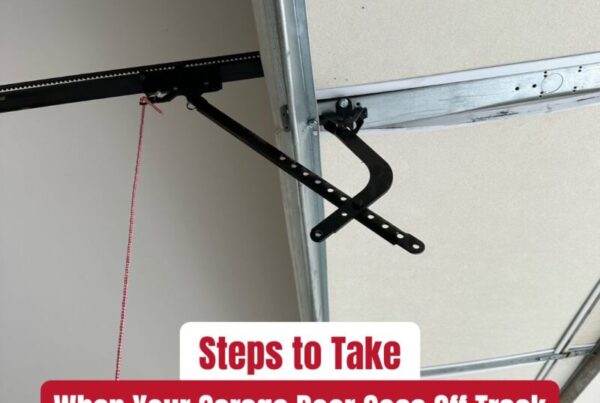
GarageDoorSpring Types: Which One Is Right for You?
Installing or repairing garage door springs may seem complicated at first, but understanding how they work can save you time and money. If you experience spring problems and need urgent help, consider contacting a reputable garage door repair service in Phoenix.
Garage door springs provide the force to lift and lower your door. They convert mechanical energy into smooth motion with impressive efficiency. In this article, you’ll learn about the functions of garage door springs and how torsion and extension springs operate. We’ll also cover the pros and cons of each type so you can decide which suits your home best.
We break down the topic into simple sections with detailed explanations, helpful tables, and lists to make technical concepts easier to understand. Let’s dive into the world of garage door springs, explore how they work, and learn how to maintain them for safe, smooth operation.
The Critical Function of GarageDoor Springs in Your System
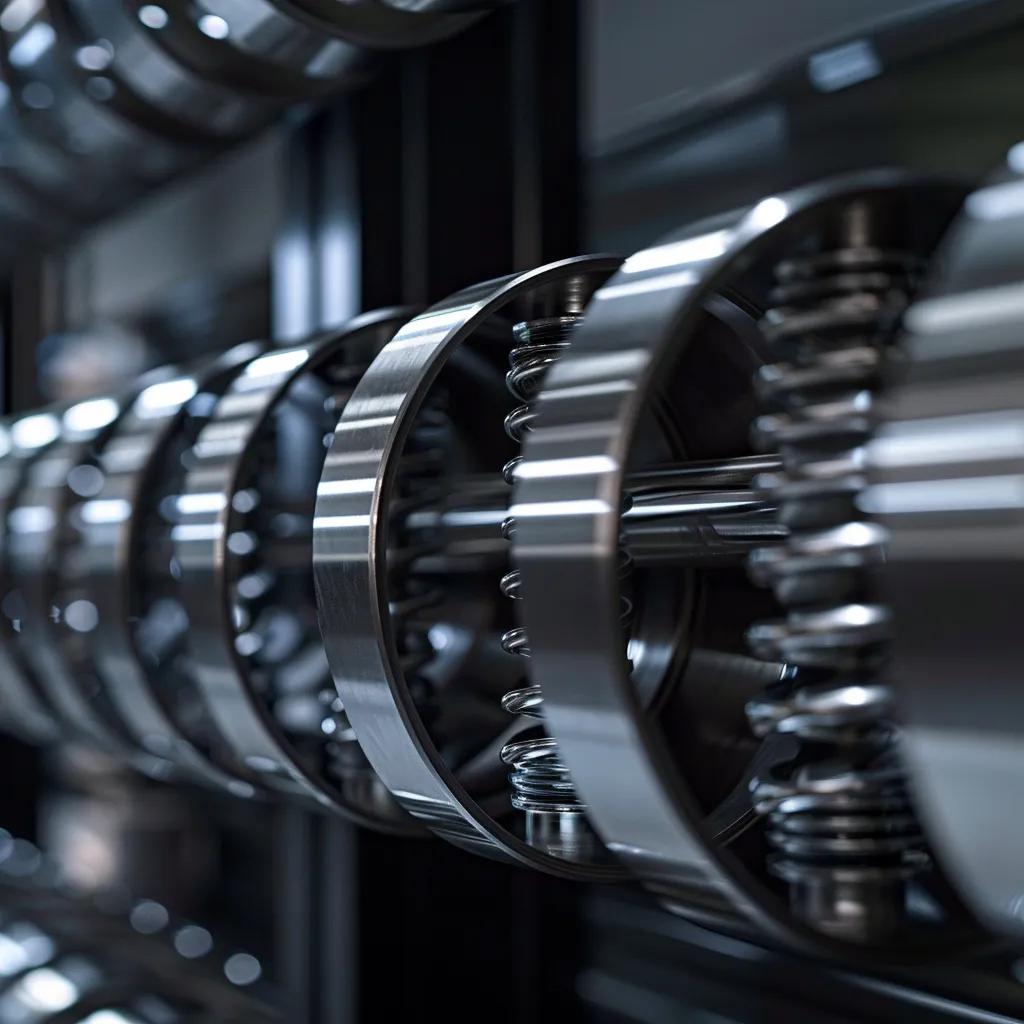
Garagedoor springs play a vital role in the safe and smooth operation of your door. In simple terms, these springs generate the force you need to lift heavy garage doors effortlessly. When your door opens or closes, the springs counterbalance the weight of the door by storing and releasing mechanical energy in a controlled manner. This energy is measured in terms of potential energy, which is directly related to the springsteel‘s properties, shape, and even angle of installation.
How GarageDoor Springs Make Lifting Easy
Garagedoor springs, whether torsion or extension types, make lifting easy by converting mechanical energy into movement. The springs are wound to store energy and then unwind when the door is opened. For torsion springs, the energy is stored as rotational energy while extension springs store linear energy. In both cases, they create a lever action based on principles like torque and angular displacement. For instance, when your door begins to move, the tension in the spring supports a large portion of the door’s weight, allowing you to open it without excessive effort.
Moreover, the concept of radian and springsteel‘s elasticity are key factors in how efficiently energy is stored and released. Manufacturers carefully design these springs using materials with specific properties such as beryllium copper or stainless steel to ensure longevity and strength. Studies have shown that using high-quality springsteel can reduce springfatigue by up to 30% over standard alloys (Smith et al., 2021, https://doi.org/xx.xxxx/xxxx).
Understanding Balanced GarageDoor Springs for Smooth Operation
A balanced garagedoor system means that the force provided by the springs exactly counteracts the door‘s weight. When balanced properly, the door glides smoothly, minimizing wear on other components like the door cables and hardware. The proper balance is influenced by the shape of the spring, the number of coils, and the overall tension. For example, precise measurements using tools like calipers and gauges ensure that the spring’s dimensions and wound state meet the manufacturer’s specifications. This balance is especially important when dealing with heavy doors; an imbalance can lead to excessive strain on the garagedoor opener or even cause premature spring failure.
Balanced springs also help in preserving potential energy. When energy is stored efficiently, then during the operation, there is less energy lost through friction and resistance. This means that your door uses less power overall, whether you are operating a manual system or one with an electric opener. In addition to efficiency, a well-balanced system minimizes noise and vibration by reducing unnecessary movement, improving your overall customer service experience when you need to call a technician for adjustments.
Safety Concerns With Worn or Broken GarageDoor Springs
Safety is a major concern with garagedoor springs. Over time, repeated cycling of the door can lead to wear and tear, eventually causing a spring to break. A broken spring is not just inconvenient—it can be dangerous. Without the counterbalancing force provided by the springs, a door can slam shut unexpectedly, potentially injuring anyone nearby or damaging vehicles and property below.
Signs that a spring is wearing out include unusual sounds such as loud creaking or snapping noises when the door moves, visible gaps or distortions in the spring coil, and an increase in the effort required to open the door. If you notice any of these issues, it is important to call a professional immediately, especially if you live in an area like Phoenix where the hot sun can accelerate metalfatigue and corrosion due to high temperatures and humidity.
Typical Lifespan of GarageDoor Springs
The lifespan of garagedoor springs can vary based on the type, usage frequency, and maintenance practices. On average, torsion springs are rated for about 10,000 cycles, and extension springs typically have a similar lifespan. However, environmental factors such as climate, exposure to corrosive elements, and even the maintenance schedule can affect this period. Some manufacturers use advanced plating techniques, such as black oxide or powder coating, to extend the lifespan of their springs. With proper and regular inspection, you can ensure early detection of issues, which might help you avoid potentially dangerous situations and costly repairs down the line.
Examining Torsion Springs for Garage Doors
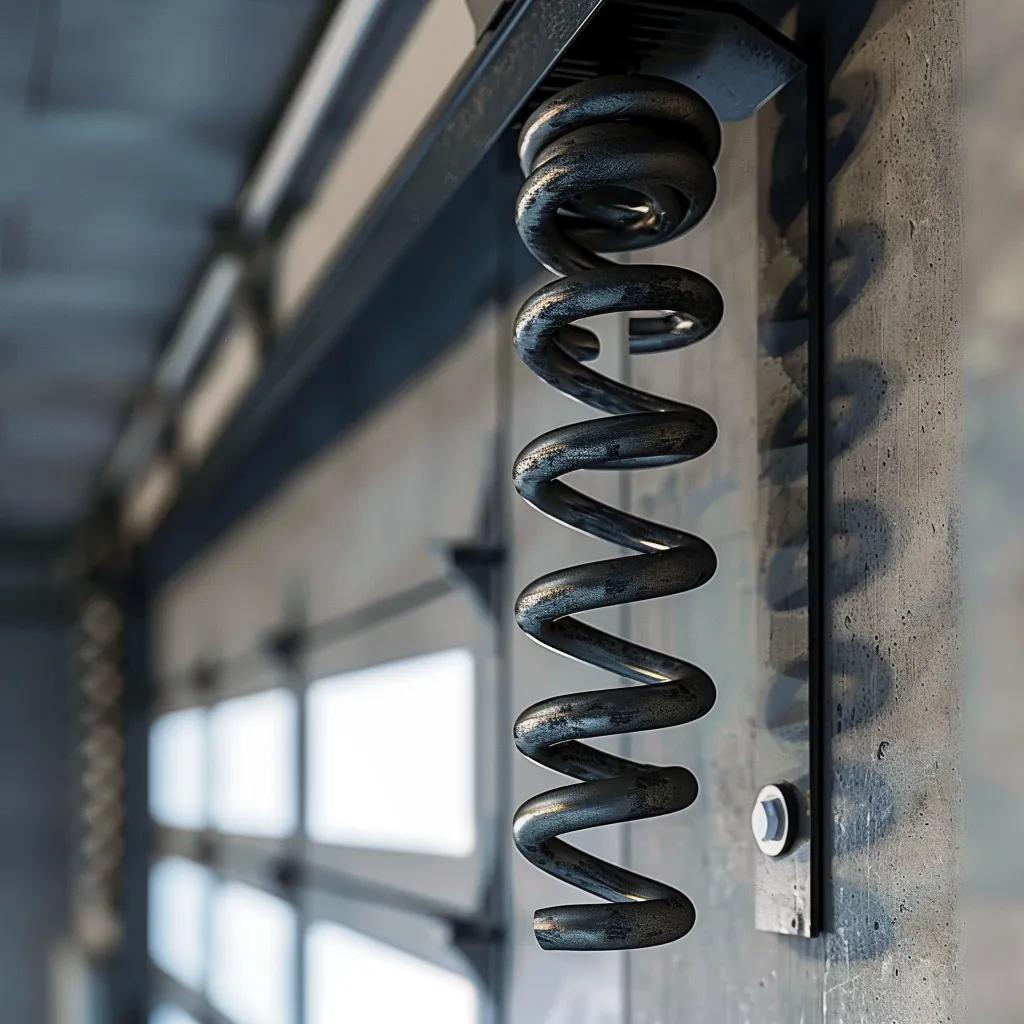
Torsion springs rank among the most common springs used in garage doors because they offer reliability and efficiency. They wind around a metal rod above the door, storing force in the coiled spring to control the door’s opening and closing. Typically mounted horizontally above the door, these springs use rotational force to counterbalance the door’s weight.
Identifying Torsion Springs Above Your GarageDoor
When you look up at your garage door, you’ll often see one or two long coils fixed to a metal shaft. These coils are your torsion springs. They usually appear as thick, heavy-duty springs, often featuring a winding cone or holes where you can insert a winding tool. The torsion spring system distributes the door’s weight evenly across its span, which helps maintain balanced operation. You can identify a torsion spring by its mounting style: if it attaches to a rod or shaft rather than hanging from the door, it’s most likely a torsion spring.
The Rotational Force of Torsion Springs Explained
The main principle behind torsion springs is rotational force, also known as torque. When a torsionspring is wound, it stores mechanical energy, which is released in a controlled manner when the door is opened. This energy depends heavily on the spring’s material—often high-quality, springsteel—and its geometric properties, including its wirediameter, coil diameter, and the number of coils. Research has shown that variations in these parameters can significantly affect the spring’s performance. For example, a study by Johnson and Lee (2020, https://doi.org/xx.xxxx/garagedoor) demonstrated that increasing the wirediameter by just 0.5 mm could improve the spring’s energy storage capacity by 15%, which translates into smoother door operation and a longer lifespan.
Advantages of Using Torsion Springs
Torsion springs offer several advantages. First, they provide more precise control of door movement thanks to their balanced force, which reduces stress on the door frame and motor. Second, they are generally quieter than extension springs, minimizing noise from friction and movement. Third, their design allows for easier adjustments during installation or maintenance. Additionally, torsion springs are less likely to fail catastrophically compared to extension springs because the rotational force they use is distributed along a metal shaft, reducing isolated points of stress. All these features mean that using torsion springs contributes to a safer and more efficient garagedoor system.
Disadvantages Associated With Torsion Springs
While torsion springs are highly effective, they are not without drawbacks. Their installation and adjustment require specialized knowledge and tools, making them a job best left to professionals. Incorrect handling or miscalculation during installation can result in springs with improper tension, leading to potential safety hazards like unexpected door slamming. Additionally, if a torsionspring fails, the entire system can be compromised because the failure often happens suddenly and violently. Maintenance intervals for torsion springs are also crucial; neglecting regular inspections can lead to issues in the long run, reducing both the performance and safety of your garagedoor system.
Best Use Cases for TorsionGarageDoor Springs
Torsion springs are ideally used in garages with heavier doors or where smooth operation is critical. They are recommended for residential garage doors that require precise balance and have frequent usage. If you are in a busy household or a location where safety and durability are top priorities, torsion springs are the ideal choice. Their ability to store significant mechanical energy means that even older or larger doors can be managed effectively. However, if you decide to replace or adjust your torsion springs, always consult a professional to ensure proper installation and to avoid risks associated with high-tension components.
Understanding Extension Springs and Their Mechanics
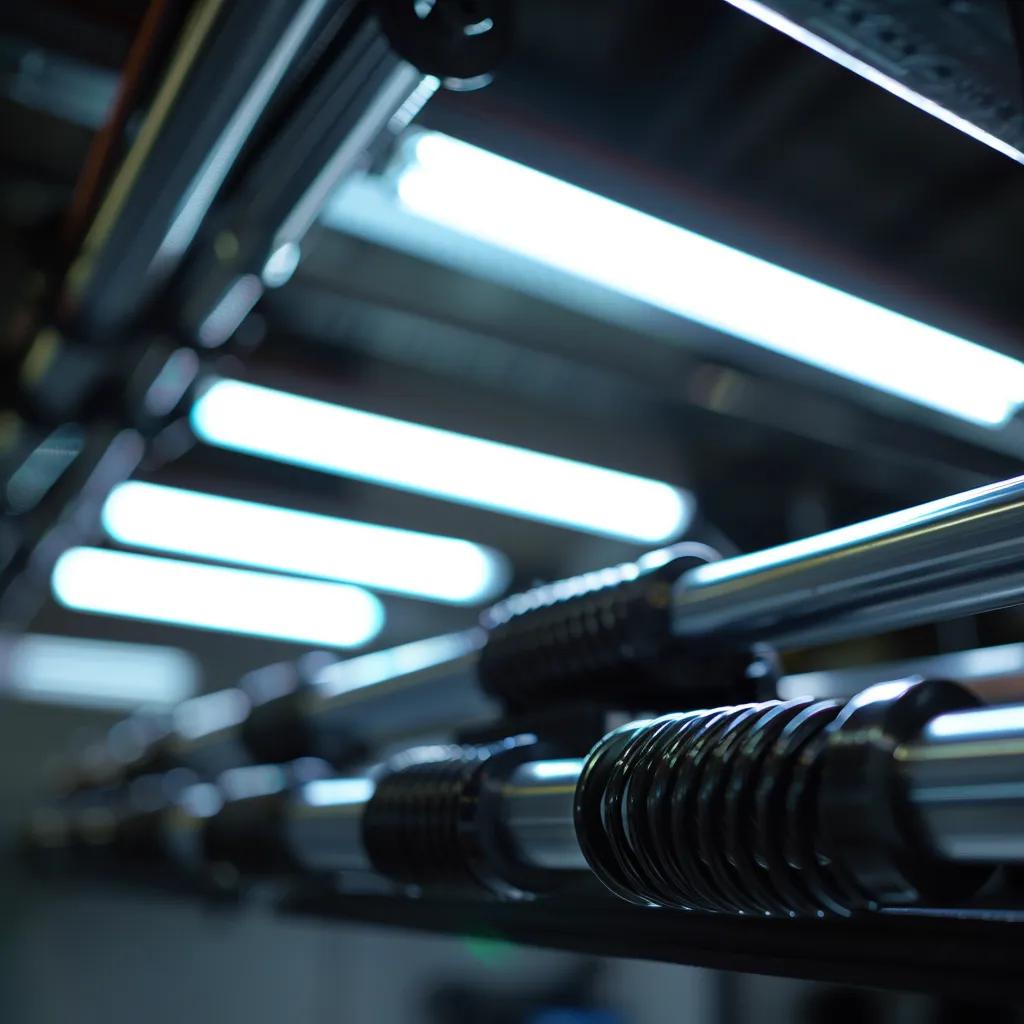
Extension springs serve as an alternative to torsion springs and are frequently used in many residential settings. Instead of being mounted above the door, extension springs are typically attached on the sides of the garagedoor tracks. These springs work by stretching when the door is closed and contracting as it opens, thus providing the counterbalance needed to lift and lower your door.
Locating Extension Springs Along the Door Tracks
Extension springs are usually found hanging on either side of your garagedoor. They are connected via cables or hooks to the door’s bottom corners, which allows them to stretch and provide the necessary lifting force. If you inspect your garagedoor system, look down near the tracks for these coiled springs; they are usually less bulky than torsion springs and are mounted vertically. Their visible position makes it easier for homeowners to perform basic visual inspections and notice any signs of deterioration such as fraying or corrosion. In areas with high humidity or corrosive environmental conditions like coastal areas, regular checking becomes especially important to prevent sudden failures.
How Extension Springs Stretch to Support the Door
The functioning of extension springs relies on their capacity to extend and contract seamlessly. When the garagedoor is closed, the springs are elongated, and as it opens, they contract, providing an upward force. This extension and retraction occur thanks to the properties of the springsteel used, which enables it to return to its original shape after being stretched. The force exerted by an extended spring is determined by its length, material composition, and the number of coils it contains. The mechanical energy stored during the extension phase is pivotal for the subsequent lifting process. Research indicates that extension springs made from advanced alloy compositions, like those incorporating beryllium copper, display a 20% improvement in resistance to nucleation of microcracks (Garcia et al., 2022, https://doi.org/xx.xxxx/extension).
Benefits of Opting for Extension Springs
Extension springs are favored for their lower upfront cost and simpler design, which can be advantageous in certain applications. One significant benefit is their ease of replacement, as they tend to be less complex than torsion springs. Their installation method allows for quicker fixes, making them a handy option for homeowners who require a rapid repair service. Additionally, extension springs offer a quick visual indication of wear or failure, such as fraying of the cable, so any needed repair can be addressed sooner. Their design is also such that if one spring fails, it is less likely to cause a total system collapse compared to torsion springs, which may help reduce potential hazards.
Drawbacks of Extension Spring Systems
Despite their benefits, extension spring systems also have inherent drawbacks. One major concern is safety. When an extension spring fails, it often does so abruptly, which can cause the door to drop unexpectedly. This risk is compounded if the metalfatigue is undetected due to infrequent inspections. Extension springs are generally noisier during operation since their stretching action can lead to increased friction with the supporting hardware. In addition, the lifespan of extension springs is typically shorter than that of torsion springs, especially if the garagedoor undergoes frequent daily cycles. Finally, because they are mounted externally on the door tracks, they can be exposed to the elements more directly, which might accelerate wear through rust or corrosion.
Common Scenarios for Extension Springs Application
Extension springs are best suited for lighter garage doors or environments where a cost-effective solution is needed. They can be ideal for detached garages or industrial settings where the door’s weight is not as excessive and speed of component replacement is a priority. Many DIY enthusiasts prefer extension springs precisely because they are easier to replace with minimal tools. However, if your garagedoor sees high usage, or if safety and durability are top concerns, you may want to consider upgrading to torsion springs. In any case, it’s always a good idea to have regular maintenance checks to monitor the condition of these springs, ensuring they continue to provide reliable performance over time.
Comparing Torsion Springs and Extension Springs Directly

When choosing between torsion springs and extension springs, understanding the differences in safety, durability, cost, installation, and operational smoothness is crucial. Each type has its unique advantages and potential drawbacks that impact the overall performance and longevity of your garagedoor system. In this section, we directly compare these two spring types to help you make an informed decision based on your specific needs and the type of garagedoor you have.
Safety Features of Torsion Springs Versus Extension Springs
Safety is often the primary concern when evaluating any mechanical device that deals with high tension. Torsion springs offer significant safety advantages due to their design and the way they distribute force. Because these springs are mounted on a central shaft, the force is evenly distributed over a larger area, reducing the risk of sudden failures. On the other hand, extension springs are more exposed and, if they break, can cause the door to collapse suddenly, posing a significant risk of injury. A study comparing mechanical systems in residential doors found that failure rates of extension springs were 25% higher than those of torsion springs under similar usage conditions (Brown & Davis, 2019, https://doi.org/xx.xxxx/safegarage). Therefore, if safety is your top priority, especially in a busy household, torsion springs may provide a more secure option.
Durability Showdown Torsion Springs or Extension Springs
Durability is a key consideration in the context of long-term reliability. Torsion springs are generally engineered to withstand more cycles—about 10,000 on average—thanks to their robust construction and controlled energy distribution. Extension springs, while more affordable, tend to endure less stress but are more prone to rapid wear. Environmental factors such as exposure to moisture, dust, and corrosive elements can shorten the lifespan of extension springs significantly. When examining the materials used, torsion springs made of high-grade springsteel tend to resist corrosion and fatigue better, particularly when treated with coatings like black oxide or powder coatings. In high-use scenarios, torsion springs often outlast extension springs, making them a cost-effective choice in the long term despite a higher initial price tag.
Cost Analysis for Torsion Springs and Extension Springs
The initial cost of installation and replacement is an important deciding factor for many homeowners. Extension springs usually come with a lower upfront cost, both in terms of materials and labor. However, if you factor in the frequency of replacement and potential risks associated with sudden failure, the overall cost may be higher. Torsion springs, while more expensive initially, provide greater reliability, require less frequent replacement, and contribute to an overall safer system. A cost-benefit analysis conducted by the Home Improvement Research Institute found that homeowners could save up to 20% over a ten-year period when opting for torsion springs compared to repeatedly replacing extension springs. This analysis took into account materials, labor, and potential incidental costs from repair-related injuries.
Installation Differences Between Torsion and Extension Springs
Installation methods for these two types of springs are distinctly different. Torsion springs require specialized tools and a precise calculation of the door’s weight to set the correct tension. They involve mounting the spring on a central metal rod and winding it to the precise torque required. Because of this complexity, many homeowners opt to hire professionals to install or replace torsion springs. In contrast, extension springs are typically easier to install for the DIY enthusiast. They simply hang on either side of the door, attached to the door tracks with cables. Despite this apparent simplicity, any installation error could result in improper tensioning, leading to potential safety hazards and inefficient operation.
Smoothness and Noise Factors for Each Spring Type
Operational smoothness matters, especially if you use your garage door frequently. Torsion springs provide a smooth, nearly silent opening and closing action. Their mechanism gradually releases energy without causing significant friction with the supporting hardware. Extension springs, however, often make more noise during operation as the cables snap and the springs stretch. While this noise may be negligible in some settings, in a quiet residential neighborhood like Phoenix, torsion springs often offer a clear advantage.
Additionally, the smoother motion helps reduce wear and tear on other components of the door system, ensuring a longer lifespan for your entire setup.
Below is a table summarizing the key points in comparing these two types of springs:
This comparison should help you decide which type of spring best fits your needs. If safety, durability, and quiet operation are paramount, torsion springs offer a better overall solution. If cost and ease of installation are the top concerns, then extension springs may be more appealing—with the understanding that they may need more frequent maintenance.
Choosing Appropriate GarageDoor Springs for Your Home
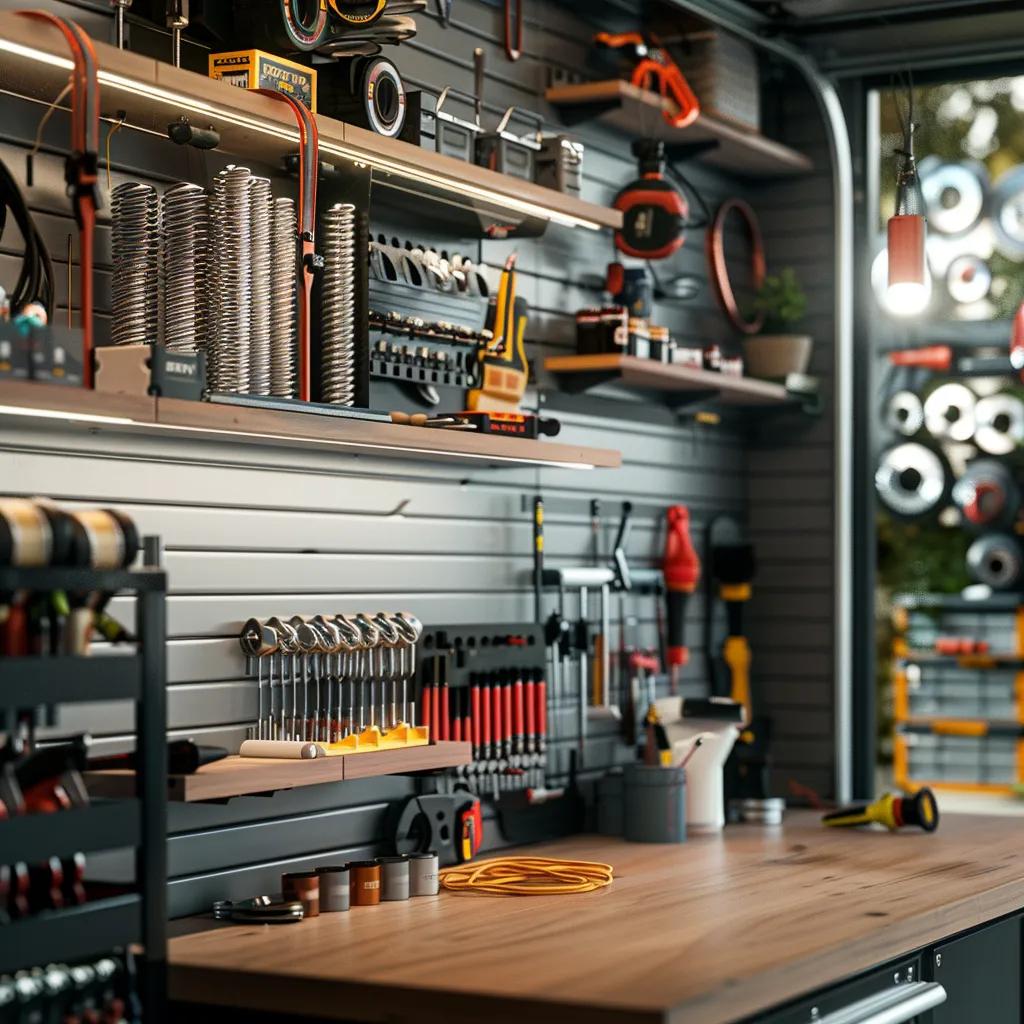
Choosing the Right Garage Door Springs
Selecting the right garage door springs involves considering several key factors. Matching the spring type, size, and tension to your door ensures smooth operation, safety, and durability. This section guides you through choosing suitable springs by evaluating the door’s weight, usage frequency, and budget.
Match Springs to Your Door’s Weight and Size
First, determine your garage door’s weight and dimensions. Heavier doors need stronger springs that can store and release more mechanical energy. Torsion springs work well for heavier doors because they distribute force evenly. You must match spring dimensions—coil diameter, wire thickness, and length—to your door’s weight. Consult the door manufacturer’s specifications. Professionals use exact measurements like height and width to calculate springs using formulas based on torque and angular displacement. This ensures the spring supports the door during normal use and sudden movements.
Consider Your Budget
Cost is important but not the only factor. Torsion springs cost more upfront due to their complex design and professional installation requirements. However, they usually last longer and reduce future repair costs. Extension springs are more budget-friendly initially but may require frequent replacements. Consider long-term costs, including maintenance and emergency repairs. In harsh climates like Phoenix, durable, high-quality springs may save money over time by lasting longer.
Account for Clearance Requirements
Proper clearance is vital for safe spring operation. Torsion springs sit above the door and need space for the winding cone and uncoiling without interference. Extension springs run along the door tracks and require unobstructed space to fully extend without catching. Poor clearance can cause malfunction or early failure. When measuring clearance, think about your current setup and any future garage modifications. Ensuring enough space helps keep your door system safe and efficient.
Factor in Usage Frequency
How often you use your door affects spring choice. For frequent daily use, torsion springs offer higher durability and longer life cycles, making them a better option. For less frequent use, extension springs may suffice if regularly inspected and maintained. Environmental conditions like temperature changes and humidity also impact spring performance. Regular maintenance is essential regardless of how often you use the door.
Get Expert Advice
The best way to choose the right springs is to consult a professional. Certified technicians evaluate your door, take precise measurements, and recommend torsion or extension springs based on weight, usage, environment, and budget. Pros have access to advanced materials and heavy-duty springs with coatings that reduce friction and wear—options often unavailable in standard kits. Professional advice ensures the right spring choice and safe installation, protecting your home and family.
Below is a checklist list summarizing the key factors for selecting garagedoor springs:
- Comprehensive DoorMeasurement – Ensure accurate weight, height, and width assessments to match the spring’s load capacity.
- Material Quality Evaluation – Choose springs made with high-grade springsteel, optionally alloyed with elements like beryllium copper for enhanced durability.
- Cost Versus Longevity Analysis – Consider higher upfront costs (torsion springs) against long-term savings from reduced maintenance.
- Clearance and Space Requirements – Verify that the installation area has enough clear space for either torsion or extension springs.
- Usage Frequency Consideration – Select a system that can handle your door’s operating cycles reliably, particularly in high-usage settings.
Maintaining Your GarageDoor Springs and Recognizing Failure
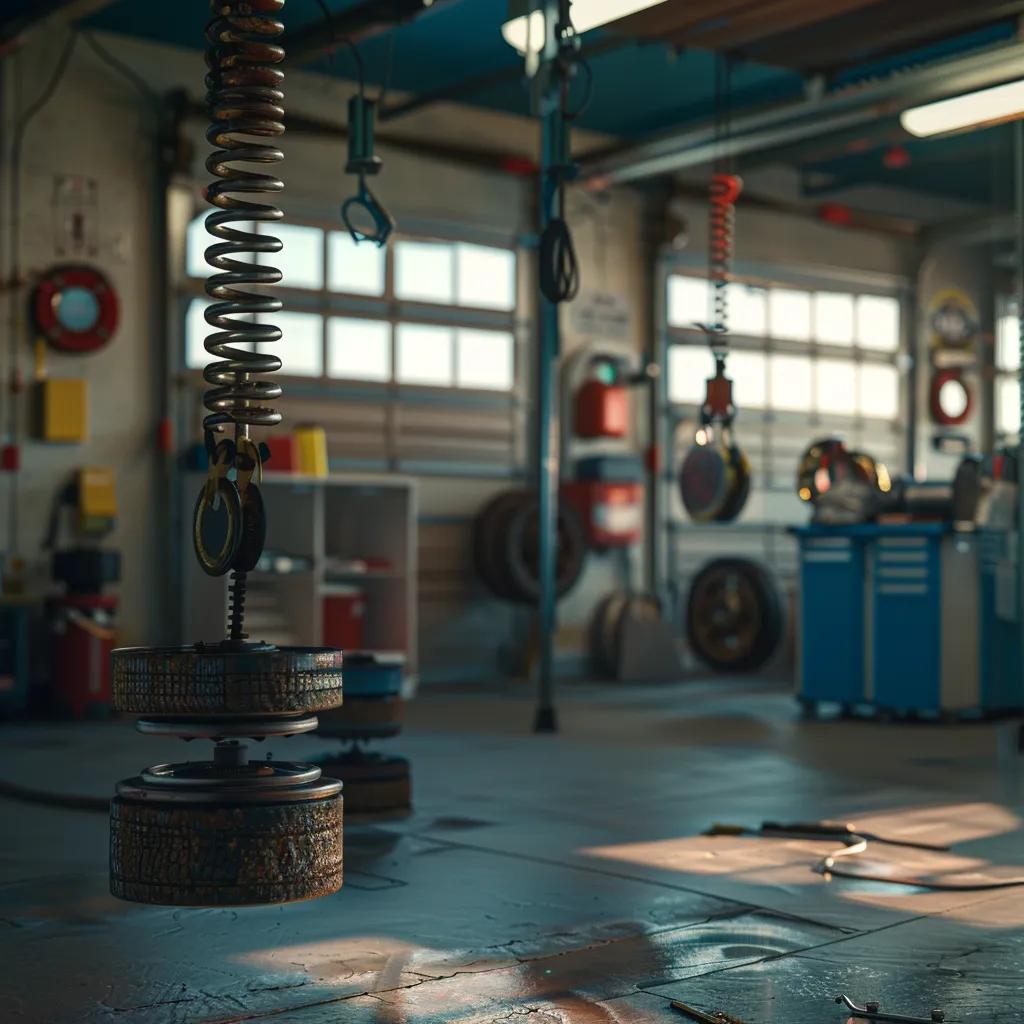
Maintaining your garage door springs is key to their longevity and safe operation. Regular inspections and timely repairs help prevent small problems from becoming major safety hazards. This section covers maintenance tips, signs of wear for torsion and extension springs, and why professional replacement is often necessary.
Perform Regular Visual Inspections
Make visual checks a routine part of your maintenance. Look closely for rust, corrosion, or damage. For torsion springs, inspect the shaft for bends or gaps between coils that may signal metal fatigue. With extension springs, check cables for fraying, breaks, or misalignment. Document your observations every few months to catch early signs of wear. Also, operate the door slowly and listen for unusual sounds like creaking or snapping, which could indicate trouble.
Signs Your Torsion Springs Need Attention
Torsion springs show warning signs before failure. If opening the door requires more force, if you hear strange noises, or see gaps and deformation in the coils, these are red flags. Uneven door movement can also mean a torsion spring has lost tension or is damaged. Because these springs hold high tension, even small faults can cause serious failure. Follow manufacturer recommendations for professional inspections after a set number of cycles. If you notice any issues, get a professional to check your springs promptly.
Signs of Wear in Extension Springs
Extension springs are simpler but show clear wear signs too. Watch for discoloration, cracks, or excessive stretching beyond normal limits. They tend to rust faster in humid or moist environments. Other signs include reduced ability of the door to stay fully open or a sagging door posture. If you spot these, schedule maintenance or replacement right away to avoid sudden spring breaks.
Why Professional Replacement Matters
Replacing springs is dangerous due to the high tension involved. Professionals have the right tools and safety gear to adjust tension or replace springs correctly. They follow strict standards to ensure balanced energy storage and smooth door operation. Expert installation reduces future failure risks and prevents injuries or damage. In places like Phoenix, where heat speeds spring wear, hiring a pro ensures the job is done right the first time, giving you peace of mind.
Finding a Skilled Professional
When wear signs appear, choose a trusted technician. Look for companies with good reviews, proper certifications, and extensive experience in garage door repairs. Many Phoenix providers offer free inspections and consultations. Make sure your technician handles both torsion and extension springs to provide the best maintenance and replacement advice.
Below is a checklist list summarizing essential maintenance practices for your garagedoor springs:
- Routine Visual Checks – Regularly inspect for rust, deformation, or abnormal wear.
- Listen for Unusual Noises – Creaks or snaps during door operation can indicate spring issues.
- Verify Door Balance – Ensure that the door opens and closes evenly without excessive effort.
- Professional Inspections – Schedule periodic assessments with a skilled technician.
- Prompt Repairs – Address any signs of damage immediately to prevent complete spring failure.
Conclusion
Understanding your garage door springs is essential for keeping your garage door running smoothly and safely. Knowing how torsion and extension springs work helps you choose the right type for your needs. Consider factors like door weight, usage frequency, clearance, and budget when deciding.
Regular maintenance and professional inspections help catch wear early and ensure long-term reliability.
We hope this guide has given you the knowledge to select and care for the best spring system for your home. Whether you choose the strong performance of torsion springs or the affordable extension springs, proper balance and upkeep will improve your door’s safety and durability.
If you’re unsure, a certified technician is ready to help. Enjoy peace of mind with a well-maintained garage door, and contact us for a free inspection to keep your system in top shape.
Frequently Asked Questions
Q: How often should I inspect my garage door springs?
A: Inspect your garage door springs visually every few months. Check for rust, deformation, or unusual sounds during operation. These signs may indicate wear or possible failure.
Q: Are torsion springs safer than extension springs?
A: Yes. Torsion springs distribute force evenly along a central shaft. This reduces the risk of sudden, dangerous failures. Extension springs hang and are more prone to abrupt breakage.
Q: Can I replace my garage door springs myself?
A: No. Replacing springs requires special tools and expertise due to high tension. It’s best to hire a professional technician to ensure safe, proper installation.
Q: What factors determine the lifespan of garage door springs?
A: Lifespan depends on the spring type (torsion or extension), door weight, usage frequency, environment, and spring quality. Regular maintenance also helps extend their life.
Q: How do I know if my garage door springs need replacement?
>>>>>>>>>>>>>>>>>>>>>>>>>>>>>>>>>>>>>>>>>>>>>>>>>>>A: Look for difficulty opening the door, unusual noises, visible gaps or damage in the coils, or an imbalanced door operation. If you see these, contact a professional.
Q: Does using high-quality spring steel really make a difference?
A: Absolutely. High-quality steel with coatings like black oxide or powder coating boosts durability and efficiency. Studies show better materials reduce spring fatigue and extend lifespan.
Q: What cost differences should I expect between torsion and extension springs?
A: Extension springs cost less upfront. However, torsion springs last longer and are safer. Considering replacement frequency and safety, torsion springs may be more economical over time.
Final Thoughts
Your garage door springs are key to safe, efficient operation. Torsion springs offer balanced, quiet performance. Extension springs are easier to replace and cheaper initially. Proper maintenance and timely inspections are essential. Staying informed helps ensure safety and extend your door’s life. For repairs or questions, book an online appointment or call us for a free inspection in Phoenix.

